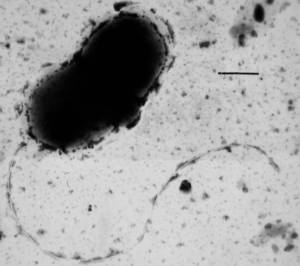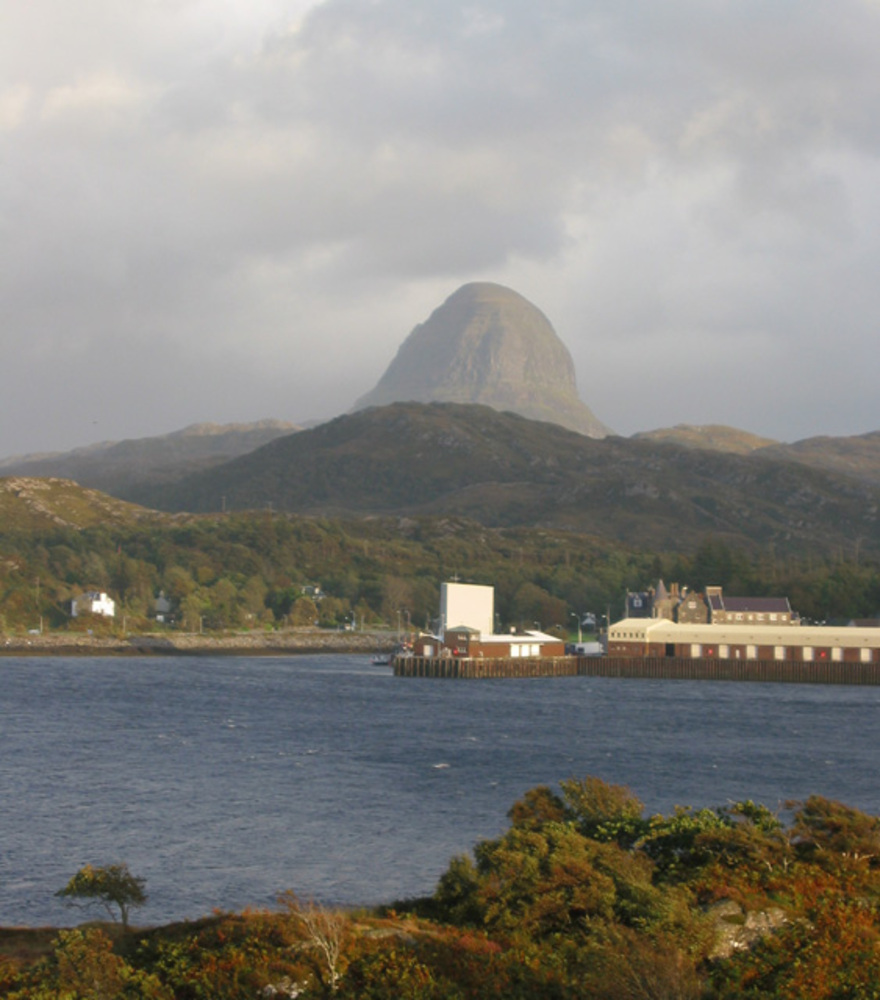Earth's Oxygenation came Earlier than Expected
Interview with
Previously, we have believed that the Earth's atmosphere turned oxygen-rich about 800 million years ago and this ushered then the era that made complex life like us possible. But now, new research from Scotland shows that we might have got it wrong. And in fact, oxygen levels increased much, much earlier. Speaking to Chris Smith, University of Aberdeen Geologist, Professor John Parnell...
 John - We're examining a key stage in the evolution of life on Earth. The evidence relates to a particular group of microbes which have been very successful and very widespread. Today, they colonise everywhere from freezing glaciers down to hot smokers in the deep ocean. They rely on reducing sulphate, so these are what are known as sulphate-reducing bacteria or sulphate-reducing microbes. But they made an important advance by getting energy in a more efficient way which involved making use of oxygen in the environment. So it's as a marker for increasing oxygen in the atmosphere that they are really important in this context.
John - We're examining a key stage in the evolution of life on Earth. The evidence relates to a particular group of microbes which have been very successful and very widespread. Today, they colonise everywhere from freezing glaciers down to hot smokers in the deep ocean. They rely on reducing sulphate, so these are what are known as sulphate-reducing bacteria or sulphate-reducing microbes. But they made an important advance by getting energy in a more efficient way which involved making use of oxygen in the environment. So it's as a marker for increasing oxygen in the atmosphere that they are really important in this context.
Chris - So we can use them as a proxy measure for when oxygen in the Earth's atmosphere in general increased and then that in turn enabled more complicated things like us to come along.
John - That's right. It's important because as oxygen increased in the atmosphere and started to penetrate into the subsurface, this opened a way to complex life including animals, and for that life to burrow down beneath the surface. So we're looking not just at an evolution of life, but an evolution of habitat as well, and an evolution of behaviour because of course, as life went beneath the surface, it could then escape predators, et cetera.
Chris - Can you put some timing on this for us? When exactly looking back in geological history are we talking about?
John - Well, it had been thought that this evolution to make use of oxygen occurred about 800 million years ago. We now have evidence from our rocks in Scotland that this occurred at least 400 million years before that. So we're substantially putting back the boundary to at least 1.2 billion years old. The oldest evidence that we have comes from near Lochinver in Sutherlandshire on the West Coast of Scotland. That's at 1.2 billion. And then we have continuing evidence from about 1 billion years old in the Gairloch district which is also on the West Coast of Scotland.
Chris - And when you say you've got this evidence, what are you looking for and what are you actually finding?
 John - The evidence doesn't come from conventional fossils. It comes from what we call chemical fossils that is distinctive chemical signatures that were left behind by the microbes. And in this case, it relates to a detailed analysis of the sulphur that the microbes were using to get energy. That sulphur now occurs in the mineral, iron pyrite and that's what we have sampled and analysed, and we've done that in a couple of different ways. We have done some chemical extractions from the pyrite. We've also used a laser technique on the pyrite and in both cases, we extract the sulphur out and then analyse its isotopic composition. And it's the details of that isotopic data that tells us that the microbes must've been using oxygen and therefore, that enough oxygen was available to them.
John - The evidence doesn't come from conventional fossils. It comes from what we call chemical fossils that is distinctive chemical signatures that were left behind by the microbes. And in this case, it relates to a detailed analysis of the sulphur that the microbes were using to get energy. That sulphur now occurs in the mineral, iron pyrite and that's what we have sampled and analysed, and we've done that in a couple of different ways. We have done some chemical extractions from the pyrite. We've also used a laser technique on the pyrite and in both cases, we extract the sulphur out and then analyse its isotopic composition. And it's the details of that isotopic data that tells us that the microbes must've been using oxygen and therefore, that enough oxygen was available to them.
Chris - So why did you undertake this study because everyone was pretty sure that about 800 million years ago, that's when things suddenly began to change? So why did you then go looking and say, "Well, is that really the date?"
John - Well, I mean, most of the rocks from this age are from the ocean, but we were aware that we had rocks back at 1.2 billion which had been laid down in a large lake. So this is effectively a terrestrial environment and that means that any microbes that might've been inhabiting that environment were much more in tune with what was going on in the atmosphere. So if there was going to be anywhere where we might find this earlier signature, it was going to be in terrestrial rocks like the ones we had. So that was a good reason to go looking there and it happens that these rocks up in Northwest Scotland are particularly well preserved for their age. So, there was a good reason to go searching there.
Chris - And I guess now, what you're going to have to do is to independently confirm or corroborate this perhaps by looking at other rocks from other bits of the world of an equivalent age, and see if you can see the same signature written there.
John - Well in a way, we actually have already corroborated this because we first of all looked at the rocks at 1.2 billion - these were the ones near Lochinver and then we looked at a younger set of rocks. I mean, quite a different set of rocks of 1 billion years old. These were the ones near Gairloch and they showed us the continuation of the same signature. So we've shown that this is not just an isolated event. We actually have a continuing story.
Chris - And what are the implications of it?
John - Well I mean, the implications are that we are pushing back the time at which there was enough oxygen in the atmosphere to support the evolution of complex life. Now it may well be that there were some other event which eventually kicked off the evolution of animals. But what we've shown is, that there was enough oxygen around so that the atmosphere was not a barrier to that evolution.
Ben - Which is a good thing at least where we're concerned. That was Aberdeen University's John Parnell, talking with Chris Smith.










Comments
Add a comment